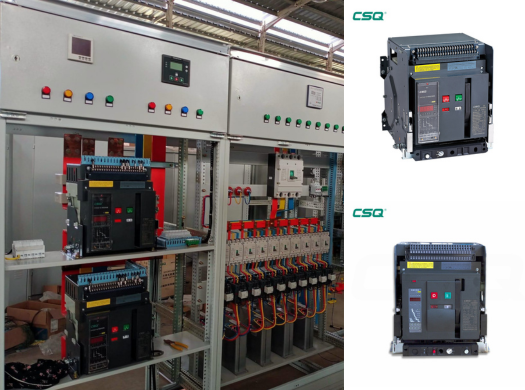Understanding Air Circuit Breakers: Types, Functions, And Applications
In modern electrical systems, safety and reliability are paramount. The Air Circuit Breaker (ACB) is an essential component ensuring these attributes. ACBs are crucial in managing and protecting electrical circuits, preventing potential hazards like short circuits and overloads. This article delves into ACBs, exploring their types, functions, and diverse applications in various industries.
What is an Air Circuit Breaker?
An air circuit breaker (ACB) is a type of electrical protection device used to interrupt the flow of current in an electrical circuit. It is designed to protect electrical equipment from damage caused by overcurrents, short circuits, or other electrical faults. ACBs are commonly used in industrial and commercial power systems, where they play a critical role in ensuring the safety and reliability of electrical installations.
The operation of an air circuit breaker is based on the principle of arc extinguishing in air. When a fault occurs, the breaker contacts separate, creating an electrical arc. This arc is extinguished by the air surrounding the contacts, which acts as the medium to cool and de-ionize the arc, thus interrupting the current flow. The air circuit breaker typically employs various mechanisms, such as arc chutes and blowout coils, to enhance the arc extinguishing process and ensure effective current interruption.
One of the key advantages of air circuit breakers is their ability to handle high currents and voltages. They are designed to provide reliable protection for electrical systems with ratings ranging from low to very high capacities. ACBs are also known for their robustness and durability, making them suitable for harsh operating environments. Additionally, they offer the flexibility of adjustable trip settings, allowing users to tailor the protection characteristics to the specific requirements of their electrical system.
Air circuit breakers come in different types and configurations, such as fixed and draw-out versions, to accommodate various installation and maintenance needs. Fixed ACBs are mounted permanently in place, while draw-out ACBs can be easily removed from their enclosures for inspection, testing, and maintenance. This feature enhances the maintainability and serviceability of the equipment, reducing downtime and improving overall system reliability.
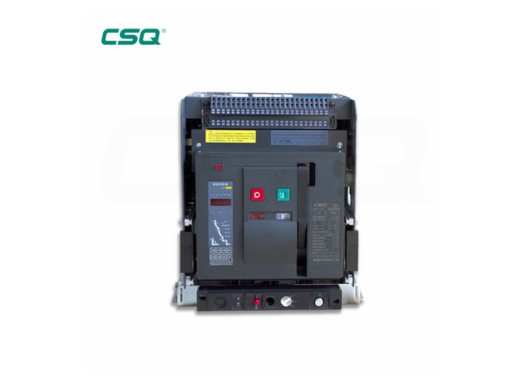
Types of Air Circuit Breakers
Air circuit breakers (ACBs) come in various types, each designed to meet specific requirements and applications in electrical systems. Understanding the different types of ACBs can help in selecting the appropriate breaker for a given application, ensuring optimal performance and safety.
1. Plain Break Air Circuit Breakers
Plain break ACBs are among the simplest forms of air circuit breakers. They operate by separating the contacts in the presence of air, which extinguishes the arc formed during the interruption process. These breakers are suitable for basic applications where high levels of performance and additional features are not required.
2. Magnetic Blowout Air Circuit Breakers
Magnetic blowout ACBs use a magnetic field to assist in extinguishing the arc. The magnetic field is generated by coils that produce a force to move the arc into arc chutes, where it is elongated and cooled. This type of breaker is effective in handling higher current interruptions and is often used in industrial applications where robust performance is needed.
3. Air Chute Air Circuit Breakers
Air chute ACBs utilize arc chutes made of insulating material to confine and extinguish the arc. The arc chutes contain a series of metal plates that split and stretch the arc, enhancing the cooling and de-ionization process. This type of breaker is commonly employed in medium and high-voltage applications due to its efficient arc-handling capabilities.
4. Draw-out Air Circuit Breakers
Draw-out ACBs are designed for easy removal and insertion into their enclosures. This feature allows for straightforward maintenance, inspection, and testing without disturbing the rest of the electrical system. Draw-out ACBs are often used in applications where minimal downtime is crucial, such as in commercial and industrial power distribution systems.
5. Fixed Air Circuit Breakers
Fixed ACBs are permanently installed in their enclosures and do not have the capability for easy removal. They are typically used in applications where frequent maintenance is not required, and the breaker is expected to remain in place for extended periods. Fixed ACBs are generally simpler in design compared to draw-out types.
6. Air Blast Air Circuit Breakers
Air blast ACBs use a high-pressure air blast directed at the arc to extinguish it. The air blast rapidly cools and de-ionizes the arc, making this type of breaker suitable for high-voltage applications. Air blast ACBs are known for their ability to handle large current interruptions and are often used in power transmission systems.
Working Principle of Air Circuit Breakers
The working principle of air circuit breakers (ACBs) involves the interruption of electrical current through the separation of contacts within an air environment. This process effectively extinguishes the arc generated when the contacts open. Understanding the detailed mechanisms behind this process provides insight into how ACBs ensure protection in electrical systems.
When an electrical fault occurs, such as an overcurrent or short circuit, the ACB's trip mechanism is activated. This mechanism can be triggered either thermally, through a bimetallic strip responding to prolonged overcurrent, or magnetically, via an electromagnet reacting to high current spikes. Once activated, the trip mechanism releases a spring-loaded mechanism that rapidly separates the contacts within the breaker.
As the contacts separate, an electrical arc forms between them. This arc is a plasma discharge that occurs due to the ionization of the air molecules in the gap between the contacts. The primary function of the ACB is to extinguish this arc quickly and efficiently to interrupt the current flow and prevent damage to the electrical system.
The arc extinguishing process in ACBs involves several methods. One common method is the use of arc chutes, which are assemblies of metal plates or grids. As the arc enters the arc chute, it is split into smaller arcs, increasing the surface area exposed to the cooling air. This splitting and elongation of the arc facilitate rapid cooling and de-ionization, leading to the extinguishing of the arc.
Another method involves magnetic blowout coils, which generate a magnetic field around the arc. This magnetic field exerts a force on the arc, driving it into the arc chute where it is stretched and cooled. The combination of these methods enhances the efficiency of arc interruption and ensures reliable performance of the ACB.
Air blast ACBs utilize a high-pressure air blast directed at the arc to achieve extinction. When the contacts open, a burst of compressed air is released, blowing the arc away from the contacts and into the arc chute. The high velocity of the air cools and de-ionizes the arc, effectively interrupting the current flow.
Throughout this process, the air medium plays a crucial role. Air, being a natural insulator, helps in cooling the arc and reducing its conductivity. The physical design of the ACB, including the positioning of the arc chutes and the use of blowout coils, is optimized to maximize the efficiency of arc extinction within the air environment.
Key Components of Air Circuit Breakers
The key components of air circuit breakers work in conjunction to ensure effective current interruption and protection of electrical systems. Contacts, arc chutes, trip mechanisms, blowout coils, the insulating medium, operating mechanisms, and the frame and housing all contribute to the reliable operation of ACBs. By understanding the working principles of these components, one can appreciate the complexity and efficiency of air circuit breakers in safeguarding electrical infrastructure.
Understanding these components provides a comprehensive view of how ACBs function to protect electrical systems.
1. Contacts: The contacts in an ACB are the primary elements responsible for carrying current under normal operating conditions. When a fault occurs, the trip mechanism activates and the contacts separate, creating an arc. The design and material of the contacts are chosen to withstand the high temperatures and electrical stresses during arc formation.
2. Arc Chutes: Arc chutes are assemblies of metal plates or grids that are strategically positioned to capture and cool the arc formed when the contacts separate. As the arc enters the arc chute, it is divided into smaller segments, which increases the surface area exposed to cooling air. This process facilitates rapid cooling and de-ionization of the arc, effectively extinguishing it and interrupting the current flow.
3. Trip Mechanism: The trip mechanism is a crucial component that detects fault conditions and triggers the opening of the contacts. There are typically two types of trip mechanisms: thermal and magnetic. The thermal trip mechanism uses a bimetallic strip that bends when heated by prolonged overcurrent, while the magnetic trip mechanism employs an electromagnet that reacts to high current spikes. Upon detecting a fault, the trip mechanism releases a spring-loaded system that rapidly separates the contacts.
4. Blowout Coils: Blowout coils are used to generate a magnetic field around the arc. This magnetic field exerts a force on the arc, driving it into the arc chute. The movement of the arc into the chute elongates and cools it, aiding in the de-ionization process. The combination of the blowout coils and arc chutes enhances the efficiency of arc extinction.
5. Insulating Medium (Air): Air serves as the insulating medium in ACBs. When the contacts open and the arc forms, the surrounding air helps to cool and de-ionize the arc. Air’s natural insulating properties play a critical role in the arc extinguishing process, preventing the arc from sustaining itself and ensuring effective current interruption.
6. Operating Mechanism: The operating mechanism is responsible for the manual or automatic opening and closing of the breaker contacts. This mechanism includes a series of springs, levers, and linkages that provide the necessary force to move the contacts. The operating mechanism ensures that the contacts can be closed to complete the circuit and opened to interrupt the current flow when needed.
7. Frame and Housing: The frame and housing of an ACB provide structural support and protection for the internal components. They are designed to withstand mechanical stresses and environmental conditions. The housing also includes safety features such as interlocks and barriers to prevent accidental contact with live parts and to contain the arc within the breaker.
Functions of Air Circuit Breakers
Air circuit breakers (ACBs) serve several critical functions in electrical systems, ensuring protection, reliability, and safety. Understanding these functions highlights the importance of ACBs in various applications, particularly in industrial and commercial power systems.
Overcurrent Protection: One of the primary functions of ACBs is to protect electrical circuits from overcurrent conditions. Overcurrents can occur due to overloads or short circuits, which can damage electrical equipment and pose safety hazards. ACBs detect these overcurrent conditions through thermal or magnetic trip mechanisms and interrupt the current flow to prevent damage and maintain system integrity.
Short Circuit Protection: ACBs are designed to respond quickly to short circuits, which involve very high current levels that can cause severe damage in a short time. The magnetic trip mechanism in ACBs detects the sudden surge in current and triggers the breaker to open the contacts, interrupting the flow of electricity and protecting the circuit from the destructive effects of a short circuit.
Switching Operations: ACBs also perform switching operations, allowing for the manual or automatic opening and closing of electrical circuits. This function is essential for routine maintenance, testing, and fault isolation. By enabling controlled disconnection and reconnection of circuits, ACBs facilitate safe and efficient management of electrical systems.
Fault Isolation: In the event of a fault, such as a ground fault or an insulation failure, ACBs help to isolate the affected section of the electrical system. This isolation prevents the fault from spreading to other parts of the system, thereby minimizing the impact and maintaining overall system stability. Fault isolation ensures that only the faulty section is taken offline, allowing the rest of the system to continue operating.
System Protection and Reliability: ACBs contribute to the overall protection and reliability of electrical systems. By promptly interrupting fault currents and isolating faults, ACBs prevent damage to electrical equipment and reduce downtime. This reliability is particularly important in critical applications such as power distribution networks, industrial plants, and commercial buildings, where uninterrupted power supply is essential.
Coordination with Other Protective Devices: ACBs are designed to coordinate with other protective devices in an electrical system, such as fuses and relays. This coordination ensures selective tripping, where only the device closest to the fault operates, minimizing disruption to the rest of the system. Proper coordination enhances the overall protection strategy and improves system performance.
Remote Operation and Monitoring: Modern ACBs can be equipped with remote operation and monitoring capabilities. These features allow for the control and supervision of the breakers from a central location, enhancing convenience and safety. Remote operation facilitates quick response to faults, while monitoring provides valuable data on breaker status and system conditions.
Arc Fault Protection: Some advanced ACBs include arc fault detection and protection features. Arc faults can cause fires and significant damage if not promptly addressed. ACBs with arc fault protection can detect the presence of an arc and interrupt the circuit to prevent potential hazards, thereby enhancing the safety of the electrical system.
Advantages of Air Circuit Breakers
Air circuit breakers (ACBs) offer several advantages that make them a preferred choice for protecting electrical systems in various applications. These advantages contribute to their effectiveness in ensuring system reliability, safety, and efficiency.
High Current Interruption Capability: One of the primary advantages of ACBs is their ability to interrupt high current levels. This makes them suitable for use in systems with high voltage and current ratings. ACBs can handle significant fault currents, providing robust protection against overcurrent and short circuit conditions.
Adjustable Trip Settings: ACBs come with adjustable trip settings, allowing users to customize the protection parameters according to the specific requirements of their electrical system. This flexibility enables precise coordination with other protective devices, ensuring selective tripping and minimizing disruption to the rest of the system during a fault.
Enhanced Safety Features: ACBs incorporate several safety features that enhance their reliability and protection capabilities. These features include arc chutes, blowout coils, and insulation barriers, which work together to extinguish arcs and prevent the spread of faults. Additionally, modern ACBs may include remote operation and monitoring capabilities, allowing for safer and more convenient control of the breaker.
Ease of Maintenance: The design of ACBs facilitates ease of maintenance, which is crucial for ensuring long-term reliability and performance. Draw-out ACBs, in particular, can be easily removed from their enclosures for inspection, testing, and maintenance without disturbing the rest of the electrical system. This feature reduces downtime and simplifies maintenance procedures.
Durability and Longevity: ACBs are known for their robust construction and durability. They are designed to withstand harsh operating conditions, including high temperatures and mechanical stresses. This durability translates to a longer lifespan and reduced need for frequent replacements, contributing to lower maintenance costs over time.
Versatility and Application Range: ACBs are versatile and can be used in a wide range of applications, from low voltage to high voltage systems. They are commonly employed in industrial plants, commercial buildings, power distribution networks, and other critical infrastructure. This versatility makes them a suitable choice for various environments and operational requirements.
Quick Response Time: The rapid response time of ACBs is another significant advantage. The trip mechanisms in ACBs, whether thermal or magnetic, are designed to react quickly to fault conditions, ensuring prompt interruption of the current flow. This quick response minimizes the risk of damage to electrical equipment and enhances overall system protection.
Environmental Friendliness: ACBs do not use oil or gas as the interrupting medium, relying instead on air. This makes them more environmentally friendly compared to other types of circuit breakers that use potentially hazardous materials. The use of air as an insulating and interrupting medium reduces environmental impact and simplifies disposal at the end of the breaker's life cycle.
Cost-Effectiveness: Considering their long lifespan, ease of maintenance, and reliability, ACBs offer a cost-effective solution for electrical protection. The initial investment in ACBs is offset by the reduced maintenance costs and enhanced protection they provide, making them an economically viable choice for many applications.
Enhanced System Coordination: ACBs can be effectively coordinated with other protective devices in an electrical system. This coordination ensures that only the breaker closest to the fault trips, minimizing the impact on the rest of the system. Improved coordination enhances system stability and reliability, contributing to more efficient power distribution.
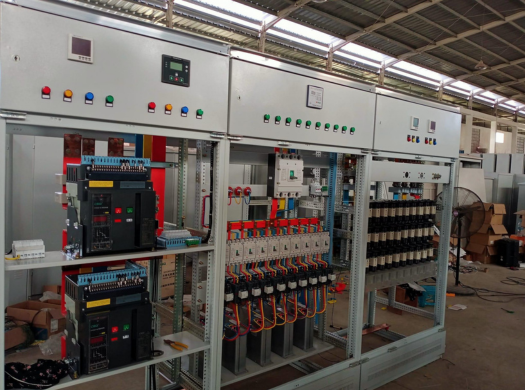
Applications of Air Circuit Breakers
Thanks to their versatility and reliability, ACBs find applications across industrial, commercial, and residential sectors.
Industrial Use Cases
- Manufacturing: ACBs protect and control power distribution in manufacturing plants, ensuring smooth operations and safety.
- Power Plants: They manage and protect electrical circuits in power generation facilities, preventing faults and outages.
- Data Centers: ACBs ensure reliable power distribution and protection in data centers, crucial for maintaining uptime and data integrity.
Commercial Use Cases
- Office Buildings: ACBs are used in office buildings to control and protect electrical systems, ensuring safe and efficient power distribution.
- Shopping Malls: They manage the complex electrical needs of large commercial spaces, providing reliable protection and control.
- Hospitals: In healthcare facilities, ACBs ensure uninterrupted power supply and protection for critical medical equipment.
Residential Use Cases
- Home Electrical Panels: ACBs are used in residential electrical panels to protect circuits from overloads and short circuits.
- Smart Homes: They play a crucial role in managing and protecting electrical systems in smart homes, enhancing safety and efficiency.
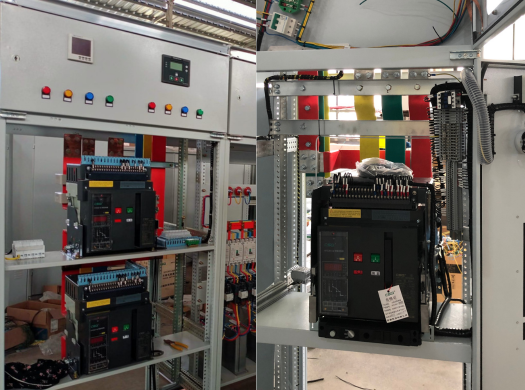
Selection Criteria for Air Circuit Breakers
Selecting the appropriate air circuit breaker (ACB) for a specific application involves evaluating several criteria to ensure optimal performance, safety, and reliability. These selection criteria help in matching the ACB's capabilities with the requirements of the electrical system it will protect.
Current Rating: The current rating of an ACB must match the maximum continuous current that the system will carry. Selecting a breaker with an appropriate current rating ensures that it can handle the load without tripping under normal operating conditions.
Short Circuit Rating: The short circuit rating, or interrupting capacity, indicates the maximum fault current that the ACB can safely interrupt. This rating must be higher than the potential fault current in the system. Properly matching this rating prevents damage to the breaker and ensures effective protection during short circuit events.
Voltage Rating: The voltage rating of the ACB should be compatible with the system's operating voltage. Using a breaker with the correct voltage rating ensures safe operation and effective insulation. ACBs are available in various voltage ratings to suit different applications, from low voltage to medium voltage systems.
Trip Characteristics: Different applications require different trip characteristics. ACBs offer adjustable trip settings, including thermal and magnetic trips, to accommodate various protection needs. Selecting the correct trip characteristics ensures that the breaker responds appropriately to overcurrent and short circuit conditions, providing effective protection without unnecessary interruptions.
Operating Environment: The environmental conditions where the ACB will be installed influence its selection. Factors such as temperature, humidity, dust, and corrosive elements need to be considered. Some ACBs are designed for harsh environments and have enhanced protection against contaminants, ensuring reliable performance in challenging conditions.
Mounting Configuration: ACBs come in different mounting configurations, such as fixed or draw-out types. The choice between these depends on the ease of maintenance, inspection, and replacement requirements. Draw-out ACBs are preferable in applications where minimal downtime and easy access are critical, while fixed ACBs may be suitable for more permanent installations.
Size and Space Requirements: The physical dimensions and weight of the ACB must be compatible with the available installation space. In applications with limited space, compact ACBs with a smaller footprint are advantageous. Ensuring adequate space for installation, operation, and maintenance is crucial for effective and safe use.
Integration with Protection System: The ACB should be compatible with other components of the protection system, such as relays, fuses, and other breakers. Proper coordination ensures selective tripping, where only the breaker closest to the fault trips, minimizing disruption to the rest of the system.
Maintenance and Serviceability: The ease of maintenance and serviceability of the ACB is an important criterion. Breakers that are easy to inspect, test, and repair reduce downtime and maintenance costs. Features like draw-out designs and modular components can enhance maintainability.
Manufacturer and Standards Compliance: Choosing an ACB from a reputable manufacturer ensures quality and reliability. Additionally, the breaker should comply with relevant industry standards and regulations, such as IEC or ANSI standards. Compliance with these standards ensures that the ACB meets the necessary safety and performance criteria.
Cost and Budget Considerations: The cost of the ACB, including the initial purchase price, installation, and long-term maintenance, should fit within the project's budget. While cost is an important factor, it should be balanced with the need for reliability, durability, and performance to ensure overall cost-effectiveness.
Remote Operation and Monitoring: For applications requiring advanced control and monitoring, ACBs with remote operation and monitoring capabilities are advantageous. These features allow for real-time supervision, quick response to faults, and integration with modern smart grid systems.
Installation and Maintenance of Air Circuit Breakers
Installation of Air Circuit Breakers
Site Preparation: Before installation, the site must be prepared to accommodate the ACB. This includes ensuring adequate space for the breaker and associated equipment, proper ventilation to prevent overheating, and a clean environment free from dust and moisture.
Mounting: ACBs can be either fixed or draw-out type. Fixed ACBs are mounted permanently, while draw-out ACBs can be removed for maintenance without disturbing the installation. Proper alignment and securing of the breaker are essential to ensure stable operation.
Electrical Connections: The electrical connections must be made according to the manufacturer's guidelines and system requirements. This includes connecting the breaker to the busbars or cables securely, ensuring tight and clean connections to prevent overheating and electrical losses.
Grounding: Proper grounding is crucial for safety. The ACB must be connected to the system ground to ensure that any fault current is safely diverted to the ground, preventing potential hazards and ensuring the safety of personnel and equipment.
Control Wiring: If the ACB includes features such as remote operation or monitoring, control wiring must be installed according to the manufacturer's instructions. This wiring connects the ACB to control panels, relays, and other monitoring devices, allowing for comprehensive control and supervision.
Testing: Once installed, the ACB should be tested to verify its operation. This includes conducting insulation resistance tests, continuity checks, and functional tests to ensure that the breaker operates correctly under normal and fault conditions.
Documentation: Proper documentation of the installation process, including wiring diagrams, test results, and compliance with standards, is essential. This documentation provides a reference for future maintenance and troubleshooting.
Maintenance of Air Circuit Breakers
Regular Inspection: Periodic inspection of ACBs is necessary to identify any signs of wear, damage, or corrosion. Visual inspections should focus on the contacts, arc chutes, and insulation materials, checking for any abnormalities that could affect performance.
Cleaning: ACBs should be kept clean to ensure effective operation. Dust, dirt, and other contaminants can impair the functioning of the breaker. Regular cleaning, especially in the arc chute and contact areas, helps maintain optimal performance.
Lubrication: The moving parts of an ACB, such as the operating mechanism and hinges, require regular lubrication to prevent wear and ensure smooth operation. The type and frequency of lubrication should follow the manufacturer's recommendations.
Contact Inspection and Replacement: The contacts in an ACB can erode over time due to the arcing that occurs during operation. Regular inspection of the contacts is necessary to assess their condition. Worn contacts should be replaced promptly to ensure reliable performance.
Functional Testing: Regular functional testing is crucial to verify the operational readiness of the ACB. This includes trip testing to ensure that the breaker trips correctly under fault conditions, as well as testing the trip mechanisms (thermal and magnetic) to confirm they operate within specified parameters.
Calibration: The trip settings of the ACB should be checked and calibrated periodically to ensure they match the system's protection requirements. Proper calibration ensures that the breaker provides accurate protection against overcurrent and short circuit conditions.
Arc Chute Maintenance: The arc chutes play a critical role in extinguishing the arc during fault conditions. Regular inspection and maintenance of the arc chutes are necessary to ensure they are free from damage and can perform effectively. Any damaged or worn arc chute components should be replaced.
Software Updates and Monitoring: For ACBs equipped with advanced monitoring and control features, regular updates to the control software may be necessary. Monitoring the breaker’s performance data can provide insights into its condition and help in proactive maintenance.
Documentation and Record Keeping: Keeping detailed records of maintenance activities, including inspection results, repairs, and replacements, is essential. This documentation helps in tracking the breaker's condition over time and planning future maintenance activities.
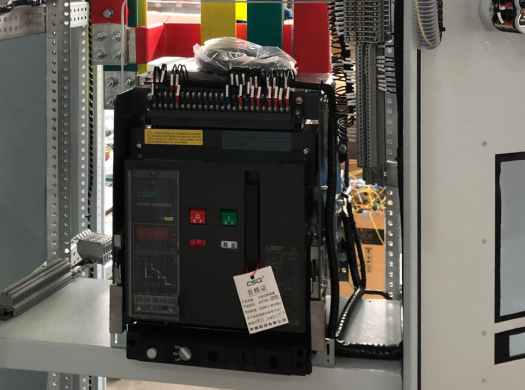
FAQs about Air Circuit Breakers
Q1: What is the main function of an Air Circuit Breaker?
The primary function of an ACB is to protect electrical circuits from damage due to overcurrent, short circuits, and other faults.
Q2: How does an Air Circuit Breaker differ from a Vacuum Circuit Breaker?
While ACBs use air for arc quenching, Vacuum Circuit Breakers use a vacuum. Vacuum breakers are generally more efficient and compact.
Q3: What are the maintenance requirements for Air Circuit Breakers?
Regular inspections, testing, and timely replacement of worn components are essential for maintaining ACBs.
Q4: Can Air Circuit Breakers be used in renewable energy systems?
Yes, ACBs are suitable for renewable energy systems, providing reliable protection and control.
Popular CSQ Electric Products
Get Price of Low-Voltage Electrical Products
Power Distribution System
- Automatic Transfer Switches (ATS)
- Manual Transfer Switches (MTS)
- Load Break Switches
- Fuse Switch Disconnector
- Molded Case Circuit Breaker (MCCB)
- Miniature Circuit Breaker (MCB)
- Residual Current Circuit Breaker With Overcurrent Protection (RCBO)
View All→
Industrial Control System
- Time Relays
- Monitoring Relays
- Other Relays
- AC Contactors
- Motor Control And Protection
- Thermal Overload Relay
View All→

Headquarter:
No.198, Wei 3rd Road, Economic Development Zone of Yueqing, Wenzhou City, China
Hangzhou Branch:
1601-3A, Unit 1, Building 1, Ruiling The World, Xiaoshan District, Hangzhou City, China
Copyright ©Siqi Technology Co., Ltd. All Rights Reserved.
